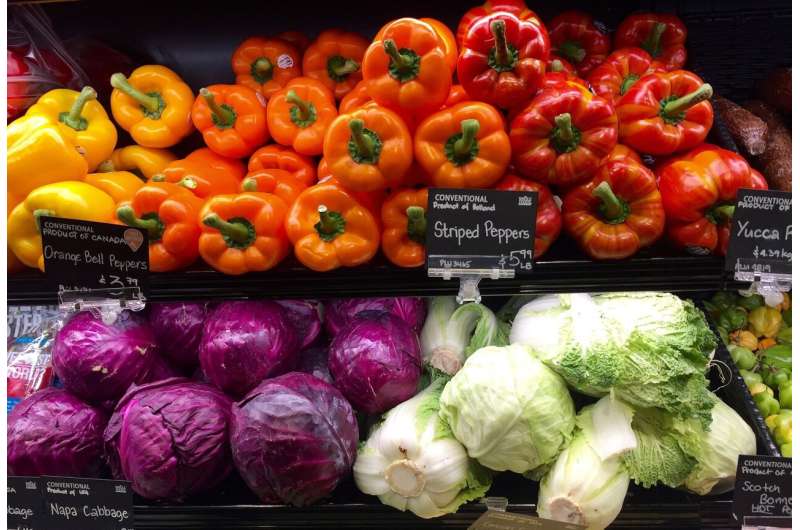Even as higher food prices make Americans think twice about what goes in the grocery cart, nearly 40% of food in the United States is wasted—mostly by shoppers who don’t eat what they bought and by retailers who fail to sell their goods.
Large retailers are the main link between farmers, producers, packaged food manufacturers and consumers, so they can play a big role in reducing waste. And they stand to benefit from doing that.
In research published in the Journal of Sustainable Marketing, Jie Zhang and Michel Wedel, marketing professors at the University of Maryland’s Robert H. Smith School of Business, and Professor Martin H. Bloem from Johns Hopkins University offer marketing solutions to retailers, including incentivizing suppliers to reduce resources and materials used in production and packaging to minimize environmental impacts, and to encourage consumers to make sustainable choices.
“Reducing food waste has the direct benefit of lowering costs for retailers,” they write. “While part of the cost savings may be passed on to consumers in the form of lower prices, food waste reduction is likely to increase profitability and enhance corporate image.”
There are many causes of food waste at the retail level: inaccurate demand forecasts, unappealing presentation and damage due to improper packing or handling during transportation.
The researchers highlight five areas that need more attention and action from marketing researchers and practitioners to alter retailers’ practices and consumer behavior in reducing food waste:
- Standardize food waste measurement. The researchers say retailers need better tracking systems to monitor and measure food spoilage and waste in real time. Having that data and making it consistent across markets and geographies can help retailers design and test ways to reduce and prevent waste.
- Optimize food use. Retailers should add or expand programs to reuse and repurpose food close to expiration dates. Some retailers use dynamic pricing, discounts, charity donation and resale to discounters, but many just throw food out when it’s close to its expiration date or use-by date. Retailers need to figure out how to sell or use this still-perfectly edible food.
- Amplify good retail practices. Local retailers and retailers in low- to middle-income countries need support to implement strategies and practices that many large retailers are already doing to manage inventory and reduce food waste.
- Nudge consumers to make more sustainable purchases and use what they buy. Eliminating buy-one-get-one-free promotions, and awareness campaigns can incentivize and encourage shoppers to mitigate food waste.
- Reduce food waste in homes. More than 60% of food waste occurs in households, so more research is needed to figure out why and how to change behaviors. Things like a recipe suggestion tool from a person’s current household food inventory could be used, as well as smart appliances and devices to help people keep better track of their food and expiration dates.
The researchers also explored the role of technology, such as using RFID and blockchain to label and keep better track of food products through supply chains. Data analytics and artificial intelligence—especially as more people buy groceries online—can also help retailers more accurately predict demand and thus make better inventory and merchandising decisions. Digital platforms can also help retailers offer consumers new ways to better manage their food inventory at home or to acquire food by creating links between stores, restaurants, caterers, consumers and charities.
More information:
Jie Zhang et al, Mitigating Food Waste in the Retail Supply Chain: Marketing Solutions, Journal of Sustainable Marketing (2022). DOI: 10.51300/jsm-2022-59
Provided by
University of Maryland
Citation:
Retailers can gain from reducing food waste, study finds (2023, February 6)
retrieved 29 August 2023
from https://phys.org/news/2023-02-retailers-gain-food.html
This document is subject to copyright. Apart from any fair dealing for the purpose of private study or research, no
part may be reproduced without the written permission. The content is provided for information purposes only.
Credit: Source link




